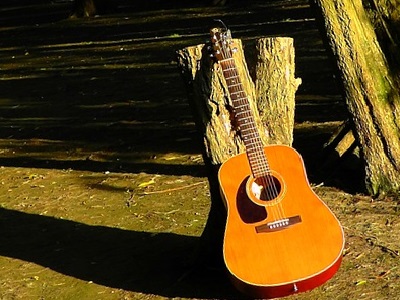Tips to Getting That Spanish Feel Into Your Music
 Spanish guitar is some of the most intricate guitar work in music. Passages can range from jazz influenced to outright absurd in the involved technical skill.
Spanish guitar is some of the most intricate guitar work in music. Passages can range from jazz influenced to outright absurd in the involved technical skill.
Just like all guitarists though, flamenco guitarists aren’t born playing mind boggling guitar runs. They all start somewhere, and in this article, we’ll discuss exactly where that is.
The most basic concept in all forms of music is the chord progression. Chord progressions are the structures that you hear when listening to a song.
If you have ever listened to a riff that involves more than one chord, you have heard a chord progression. Progressions can go one of two ways; ascending or descending. In some cases, they can go in both directions, but usually those are the longer progressions, the types of which flamenco guitar does not use.
What Are the Types of Progressions Used in Flamenco?
The most basic chord progression used in Spanish style guitar is the I – VII – VI – V progression. To start, let’s use this progression in one of the most commonly used flamenco guitar keys; A minor.
The notes of A minor are; A, B, C, D, E, F, and G. You may notice that this key has not sharps or flats. It makes it one of the most basic keys in modern music, and it also makes it an ideal place to start learning a progression.
A Simple Progression to Get Under Your Belt
Taking our key of A minor, we need to first find the one chord, or the tonic chord. For A minor, the tonic chord is A, the tonic triad being A, C, E.
Now we need to find our VII chord, or the leading tone chord. In the key of A minor, our leading tone chord is G, the triad being G, B, D.
Next, we need to find our VI chord, or the submediant chord. In our A minor key, the submediant chord is F, the triad being F, A, C.
Lastly, we need to find out V chord, or our dominant chord. In the key of A minor, our dominant chord is E, the triad being E, G, B. Click here for a comprehensive look on forming guitar triads.
The VII is What Makes the Progression Special
Now that we know this, we have our basic I – VII – VI – V progression; A, G, F, E. This is a fairly different progression from the progressions you will commonly see, which contain the tonic (I chord), the subdominant (IV chord), and the dominant (V chord), in that order. This is what gives flamenco its unique feel; the odd progressions that it uses.
Try playing this progression along to a metronome. Allow yourself to get used to the feel, noting the similarities between chords, the notes that they share, how they relate, and the contrast that they create. Once you are comfortable, try improvising over the progression. Use patterns that you are comfortable with, and use the properties of the progression to come up with fitting melodies.
If you find this progression too easy after a while, that’s a great thing; it means that you are ready to move on to more challenging Spanish flamenco concepts such as playing in phrygian modes. Always remember to revisit your roots though, as this is a progression that you will see a lot of in flamenco. The more you use it, the better prepared you will be. Have fun, and good luck!
The Best Tool For Learning to Play the Guitar
For the ultimate step-by-step guitar system, we highly recommend Gibon’s Learn & Master Guitar course. This award winning DVD course is currently on a 3-day sale and you get to save $100 off the regular price today!
Click here to learn more details and get the course before this promotion ends…







Leave A Comment